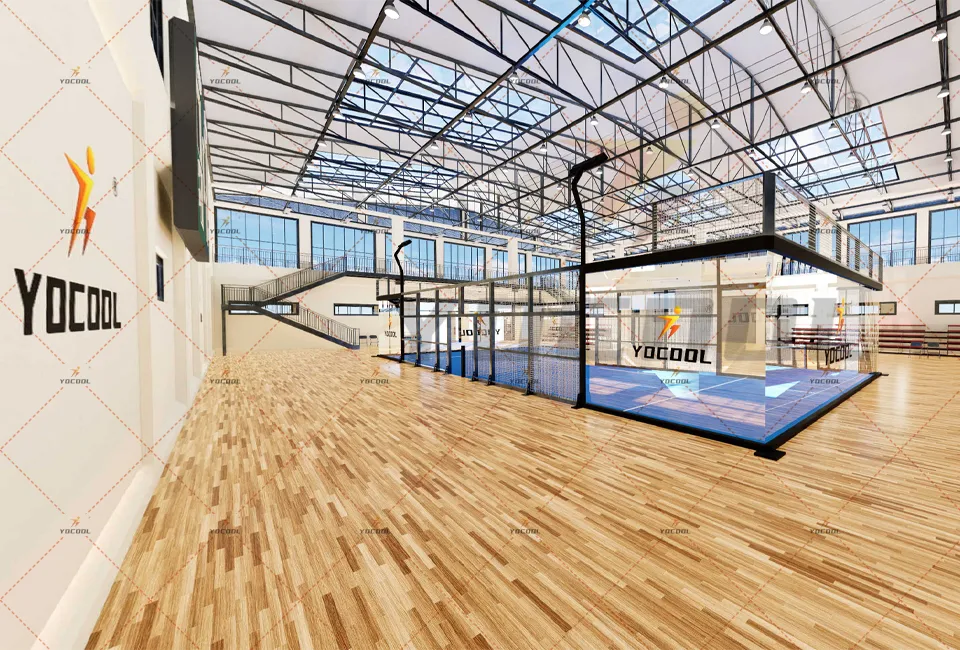

In recent years, padel has surged in popularity as one of the fastest-growing racket sports worldwide. It’s no surprise that demand for cancha padel and associated infrastructure has spiked across both private and public recreational projects. Offering a unique blend of strategy, social interaction, and physical exercise, padel requires specific court designs and materials to meet international standards. Whether for clubs, schools, or personal use, the construction of high-quality padel courts is a long-term investment that enhances value and elevates user experience.

When sourcing materials and structure systems for a china manufacturer padel court, project developers increasingly turn to established suppliers offering competitive pricing and consistent quality. Many of these manufacturers provide modular or customized padel courts with galvanized steel frames, tempered glass walls, and artificial turf surfaces engineered for long-term durability. While some might assume local sourcing is more convenient, the cost efficiency and technological advancement offered by a china manufacturer padel court often make it the smarter option—especially when ordering at scale for clubs or multi-court facilities.
To successfully install padel court infrastructure, it’s critical to plan site preparation, drainage, foundation design, and structural assembly in detail. Once the base is laid, the court must be equipped with fencing, lighting, and surface finishes that adhere to regulation dimensions. Many turnkey providers offer teams who handle the complete install padel court process, ensuring compliance with global padel federations. This guarantees player safety, court longevity, and an aesthetically pleasing result that attracts both casual players and professionals.
Rather than piecing together different components from multiple suppliers, selecting a whole padel court solution streamlines construction and ensures design uniformity. A fully integrated court includes steel structures, synthetic turf, glass panels, posts, lighting, and nets—making it easier to transport, assemble, and maintain. This holistic approach to a whole padel court reduces compatibility issues, accelerates installation, and often includes warranties and support services. It’s ideal for both entrepreneurs looking to open commercial clubs and municipalities developing public sports infrastructure.
As padel gains popularity, many facility managers are evaluating how it stacks up against traditional tennis in terms of usage and cost. Understanding tennis court price is essential when planning multi-sport complexes or upgrading older facilities. Generally, a single padel court occupies less space than a tennis court and is faster to construct. However, tennis court price points still dominate the budget for larger sports clubs due to higher space requirements and surface types like acrylic or clay. Nevertheless, padel courts often generate a higher return per square meter due to higher utilization rates and social appeal.
With proper maintenance, a cancha padel can last 10–15 years. Elements like the steel frame and tempered glass are built to withstand weather and frequent use, while the turf may need replacement every 5–7 years depending on intensity of use.
The timeline to install padel court systems usually ranges from 2 to 4 weeks, depending on site readiness, court configuration, and installation resources. Prefabricated kits from experienced manufacturers can reduce that time significantly.
Yes. A whole padel court offers better quality control, structural integrity, and visual consistency. It also simplifies the warranty process and reduces construction delays caused by incompatible components.
While tennis court price typically exceeds the cost of padel court construction due to size and surfacing requirements, the ongoing revenue potential of padel courts often balances the initial investment quickly. Operational costs for padel courts are also generally lower.
Q: What are the standard dimensions for a professional cancha padel?
A: The official dimensions are 20 meters long by 10 meters wide, enclosed by walls and fencing. The playable area includes access zones and lighting structures.
Q: Can I import a padel court kit from a China manufacturer padel court supplier?
A: Absolutely. Many Chinese suppliers offer export-ready court systems with installation manuals, certifications, and shipping support, making international logistics straightforward.
Q: What surface is best when I install padel court systems?
A: Synthetic turf is most commonly used due to its durability and comfort. It should be UV-stabilized, slip-resistant, and provide consistent ball bounce.
Q: How do I maintain a whole padel court for long-term use?
A: Regular cleaning of the turf, checking bolts and joints, and ensuring glass panels are intact are the key maintenance steps. Annual inspections are also recommended.
Q: What’s included in the average tennis court price compared to padel?
A: A tennis court price typically includes base preparation, surface coating, net systems, and fencing. Lighting and seating are often additional. In contrast, padel courts often come as all-inclusive packages, reducing hidden costs.
Sports Facilities with High-Performance Indoor Racquetball and Squash Courts
Revolutionize Indoor Sports Facilities with Advanced Squash Court Installations
Master Industrial Sports Facilities with Pro Racquetball and Squash Solutions
Integration of High-Performance Squash Court Facilities
Industrial Innovation Begins with Durable Squash Court Construction
Discover Industrial-Grade Solutions for Racquet Sports Facilities